What Kills (at least) 7,300 Babies in the United States Each Year?
SIDS: Sudden Infant Death Syndrome after Vaccination
In 2016, I was on the VaxXed Bus (the first one) with Polly Tommey and Dr. Suzanne Humphries. My stint on the bus was only a few weeks - nothing like what Polly and Suzanne experienced in the many months they were traveling across the country and to multiple other countries, documenting the stories of vaccine-injury and vaccine-induced death. I don’t know how they did it. Polly, especially. The stories are so difficult to hear, and in many cases, they have never been told before. So much pain being unleashed in that space…
During my time on the bus, we had the opportunity to record some talks about what the research shows. This is one of those talks.
Evidence mentioned in the video above:
Dr. Viera Scheibner’s Cotwatch research with her husband, Leif Karlsson.
Read more of Dr. Scheibner’s work on vaccines here.
Note: In the video, I incorrectly stated there were 69 deaths.
3. The connection between Orexin/hypocretin and SIDS video:
When I saw the video announcing this discovery, bells went off in my brain. I recalled that the H1N1 flu shot deployed in 2009/2010 had caused a notable increase in narcolepsy - so notable that it made the international news. This made me wonder if the H1N1 vaccine given to pregnant women might increase the risk of SIDS in their babies. Here is my initial post about this from Facebook:
Here is the announcement from Science Magazine:
From the article:
The 2009 H1N1 influenza pandemic left a troubling legacy in Europe: More than 1300 people who received a vaccine to prevent the flu developed narcolepsy, an incurable, debilitating condition that causes overpowering daytime sleepiness, sometimes accompanied by a sudden muscle weakness in response to strong emotions such as laughter or anger. The manufacturer, GlaxoSmithKline (GSK), has acknowledged the link, and some patients and their families have already been awarded compensation. But how the vaccine might have triggered the condition has been unclear.
In a paper in Science Translational Medicine (STM) this week, researchers offer a possible explanation. They show that the vaccine, called Pandemrix, triggers antibodies that can also bind to a receptor in brain cells that help regulate sleepiness. The work strongly suggests that Pandemrix, which was given to more than 30 million Europeans, triggered an autoimmune reaction that led to narcolepsy in some people who are genetically at risk.
“…an autoimmune reaction that led to narcolepsy in some people who are genetically at risk.”
And the way that happened is by causing an autoimmune attack on orexin (hypocretin) receptors in the brain, causing them to die out. When the receptors die out, it causes a deficiency of hypocretin (orexin) because the body stops producing it, since there is no place for it to go.
Here is the research article mentioned in the Science Magazine write-up:
And the abstract:
The sleep disorder narcolepsy is linked to the HLA-DQB1*0602 haplotype and dysregulation of the hypocretin ligand-hypocretin receptor pathway. Narcolepsy was associated with Pandemrix vaccination (an adjuvanted, influenza pandemic vaccine) and also with infection by influenza virus during the 2009 A(H1N1) influenza pandemic. In contrast, very few cases were reported after Focetria vaccination (a differently manufactured adjuvanted influenza pandemic vaccine). We hypothesized that differences between these vaccines (which are derived from inactivated influenza viral proteins) explain the association of narcolepsy with Pandemrix-vaccinated subjects. A mimic peptide was identified from a surface-exposed region of influenza nucleoprotein A that shared protein residues in common with a fragment of the first extracellular domain of hypocretin receptor 2. A significant proportion of sera from HLA-DQB1*0602 haplotype–positive narcoleptic Finnish patients with a history of Pandemrix vaccination (vaccine-associated narcolepsy) contained antibodies to hypocretin receptor 2 compared to sera from nonnarcoleptic individuals with either 2009 A(H1N1) pandemic influenza infection or history of Focetria vaccination. Antibodies from vaccine-associated narcolepsy sera cross-reacted with both influenza nucleoprotein and hypocretin receptor 2, which was demonstrated by competitive binding using 21-mer peptide (containing the identified nucleoprotein mimic) and 55-mer recombinant peptide (first extracellular domain of hypocretin receptor 2) on cell lines expressing human hypocretin receptor 2. Mass spectrometry indicated that relative to Pandemrix, Focetria contained 72.7% less influenza nucleoprotein. In accord, no durable antibody responses to nucleoprotein were detected in sera from Focetria-vaccinated nonnarcoleptic subjects. Thus, differences in vaccine nucleoprotein content and respective immune response may explain the narcolepsy association with Pandemrix.
So… while they start out saying that narcolepsy was associated with both Pandemrix vaccination and H1N1 infection, they did not find evidence of antibodies to hypocretin receptor 2 in patients with history of H1N1 infection. They also did not find evidence of antibodies to hypocretin receptor 2 in patients who received the H1N1 vaccine that contained significantly less H1N1 influenza nucleoprotein, leading the researchers to hypothesize that it is the AMOUNT of H1N1 nucleoprotein, in combination with “RESPECTIVE IMMUNE RESPONSE” (i.e. “individual differences”) that resulted in the autoimmune reaction which caused the die off of the hypocretin receptors, and the resulting deficiency of hypocretin/orexin.
Let’s think about this for a moment. The articles in Science Magazine do not give a breakdown of the ages of narcolepsy patients after H1N1 vaccination. The next study, which was conducted in Finland, does.
From the study:
Important findings from the Finnish study:
H1N1 vaccination (Pandemrix) resulted in a 17-fold increase in narcolepsy in children.
There was no observed increase in narcolepsy in adults over the age of 20 following H1N1 vaccination with Pandemrix.
Onset of narcolepsy was sudden (without warning).
Onset of narcolepsy after H1N1 vaccination occurred up to 8 months (0-242 days) following vaccination.
These findings strongly suggest that the effects of H1N1 influenza protein are dose-dependent with smaller humans being exponentially more vulnerable to autoimmune attacks on hypocretin/orexin than larger humans, as evidenced by a 17-fold increase in narcolepsy among children, with no accompanying increase in adults.
If children and adolescents are 17 times more likely to develop narcolepsy due to hypocretin deficiency after H1N1 vaccination, what does this mean for tiny babies exposed in the womb when their mothers are vaccinated with flu shots containing H1N1 influenza protein?
Women in the United States and in many other countries are strongly urged to receive flu shots during pregnancy. In all three trimesters. With onset of narcolepsy occurring as long as 8 months after vaccination, is this a factor in Sudden Infant Death Syndrome (SIDS)? Are babies in utero developing hypocretin/orexin deficiency and dying suddenly in their first few months of life because of the exposure to the H1N1 protein their mothers were injected with?
ALL FLU SHOTS DEVELOPED SINCE 2009/2010 CONTAIN THE H1N1 INFLUENZA STRAIN.
You can verify the above statement by reading section 11 (Description) in the manufacturer’s inserts at the FDA website. Here is an example of what to look for, from the FluLaval vaccine manufacturer’s insert (2024/2025 version):
Note: Since the video on the VaxXed Bus was recorded in 2016, the schedules in other countries have changed and most are increasing the number of vaccines they are offering for children in the first year of life. Many of the countries that have the lowest rates of infant death in the first year do not mandate vaccinations for school attendance.
More Evidence Continues to Accrue…
Since 2016, additional evidence has emerged that further implicates vaccination in the incidence of sudden infant death syndrome (SIDS) and sudden unexplained death in children (SUDC). One very interesting source of information came from the decrease in deaths of infants and young children during the early days of the pandemic.
In April of 2020, one month after the lockdowns began, pediatricians were getting worried…
My Facebook post in response to the above article:
In June of 2020, Health Choice published a White Paper written by Amy Becker and Mark Blaxill. In their paper, entitled “Lessons from the Lockdown,” the authors looked to answer the question, “Why are so many fewer children dying?”
This article asks the question, “What kills 7,300 babies in the United States each year?” The question comes from the data I had available to me in 2016, from the 2014 CDC publication on Infant Mortality Rates - data that was gathered in 2010. During the decade between 2010 and 2020, the CDC’s Childhood Schedule increased, adding even more vaccines given to infants and children. If we look at the data from Becker and Blaxill’s white paper, and if we consider that during the period of their analysis “well over 200 infants per week” were being saved because they were not being taken to “well-baby appointments” (aka vaccine appointments). Looking at the graph above we can see that instead of the expected rate of 700 infant deaths per week, the rate fell to as low as 450 per week by the end of the study - a decrease of 250 infants per week. Because this level fluctuated somewhat, I will stick with 200 as a weekly average. If we could continue having 200 fewer infants dying each week in the United States, there would be 10,400 fewer dead babies per year in the United States (200x52=10,400).
I wonder how many babies might be saved if we stopped giving pregnant women flu shots with the H1N1 protein?
Read More…
What to do when a child dies after receiving vaccinations...
When a child dies following vaccination, there are specific steps that need to be taken. It’s a terrible time of grief, overwhelming pain, and disbelief. And while we all want to honor the pain associated with losing someone we love in such a sudden and tragic way, there are time constraints that make the process even more difficult when it comes to dea…
SIDS: Mason Bundy died at 4 months after receiving vaccinations at his well-baby checkup.
When I was with the VaxXed Team, we visited with Kari and Bryce Bundy. Their infant son, Mason, died after receiving vaccines at his 4-month well-baby checkup.
Fetal Demise: Deaths of Infants in the Womb Following Vaccination in Pregnancy
I have been putting off this post. Every time I think about writing about vaccines in pregnancy, I feel sick. My stomach churns. My breath becomes shallow. My heart rate quickens. And the tears come. And I start looking for something else to write about because it’s just too hard. But. It’s so necessary. And I have data that needs to be shared.




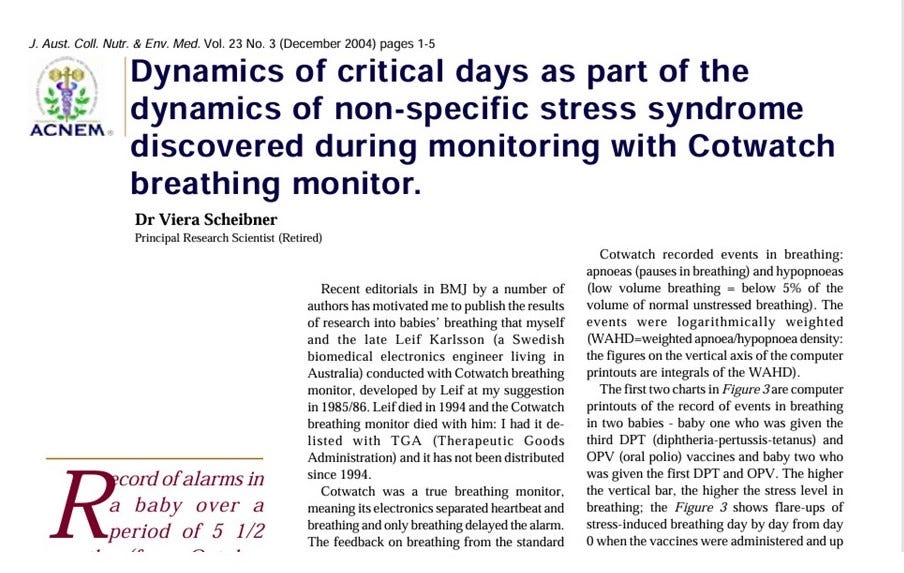
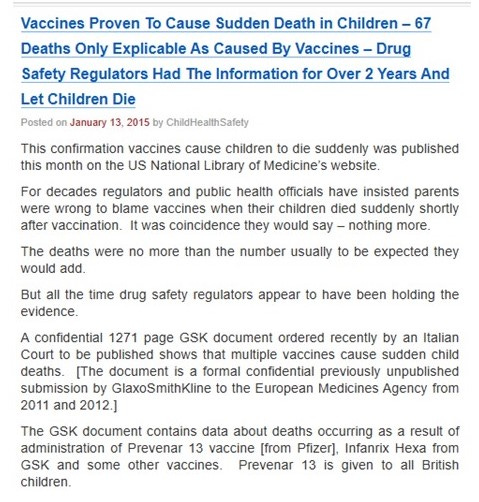
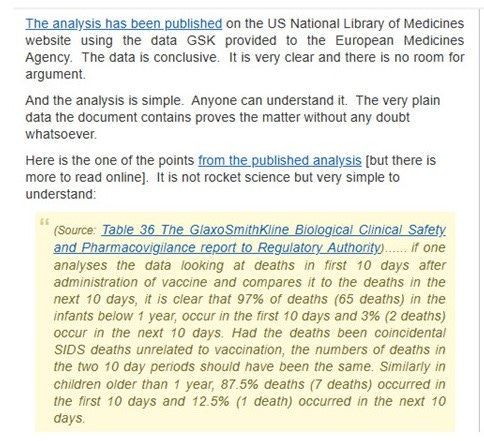
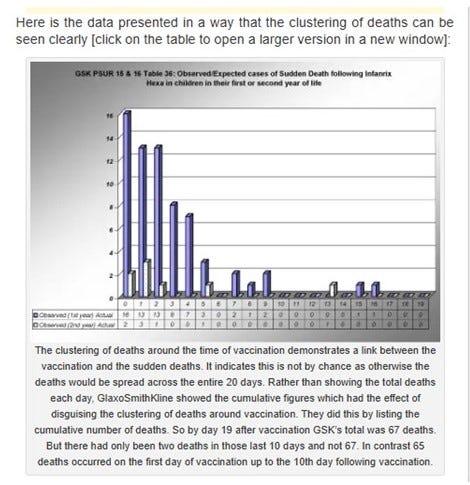
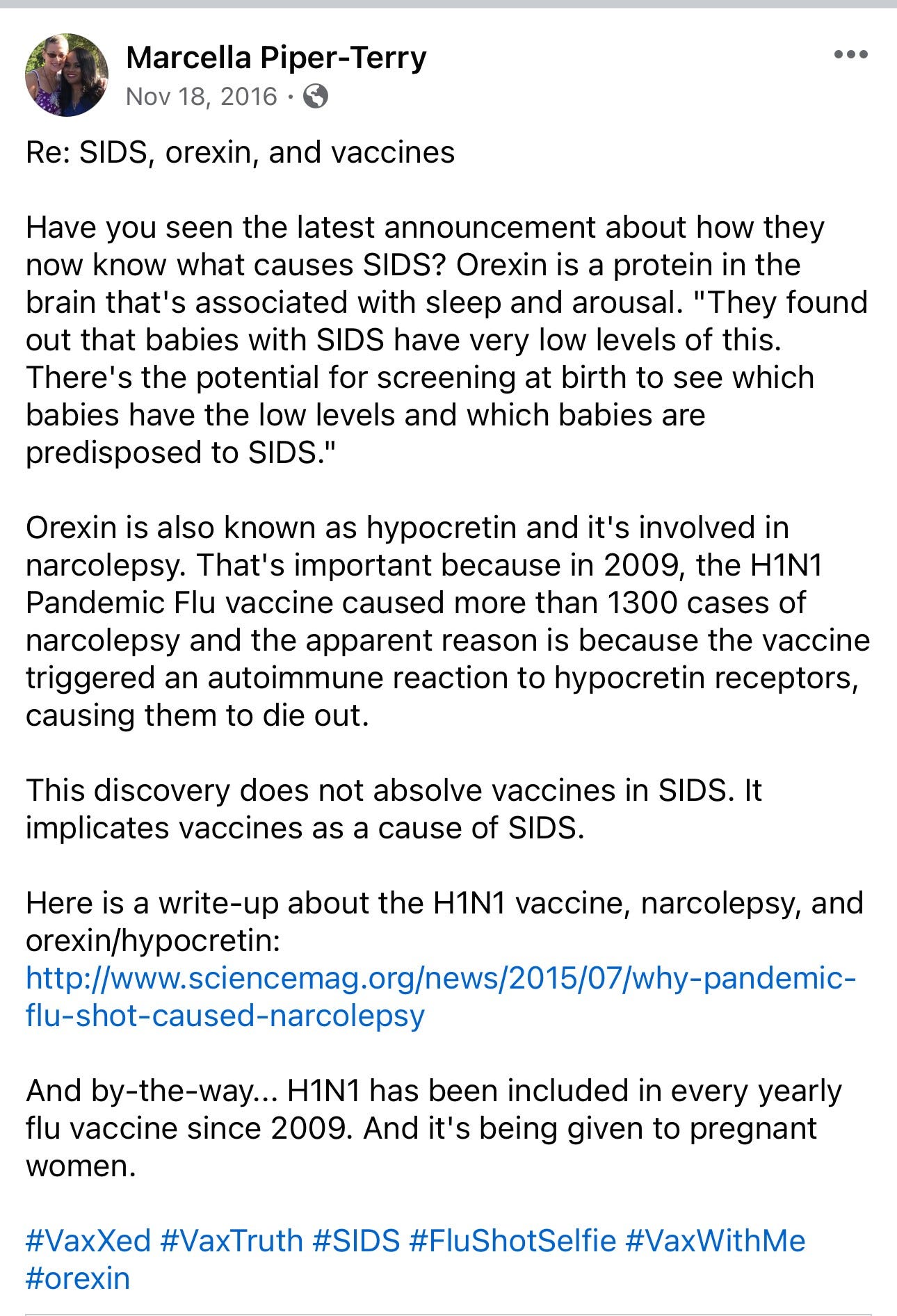
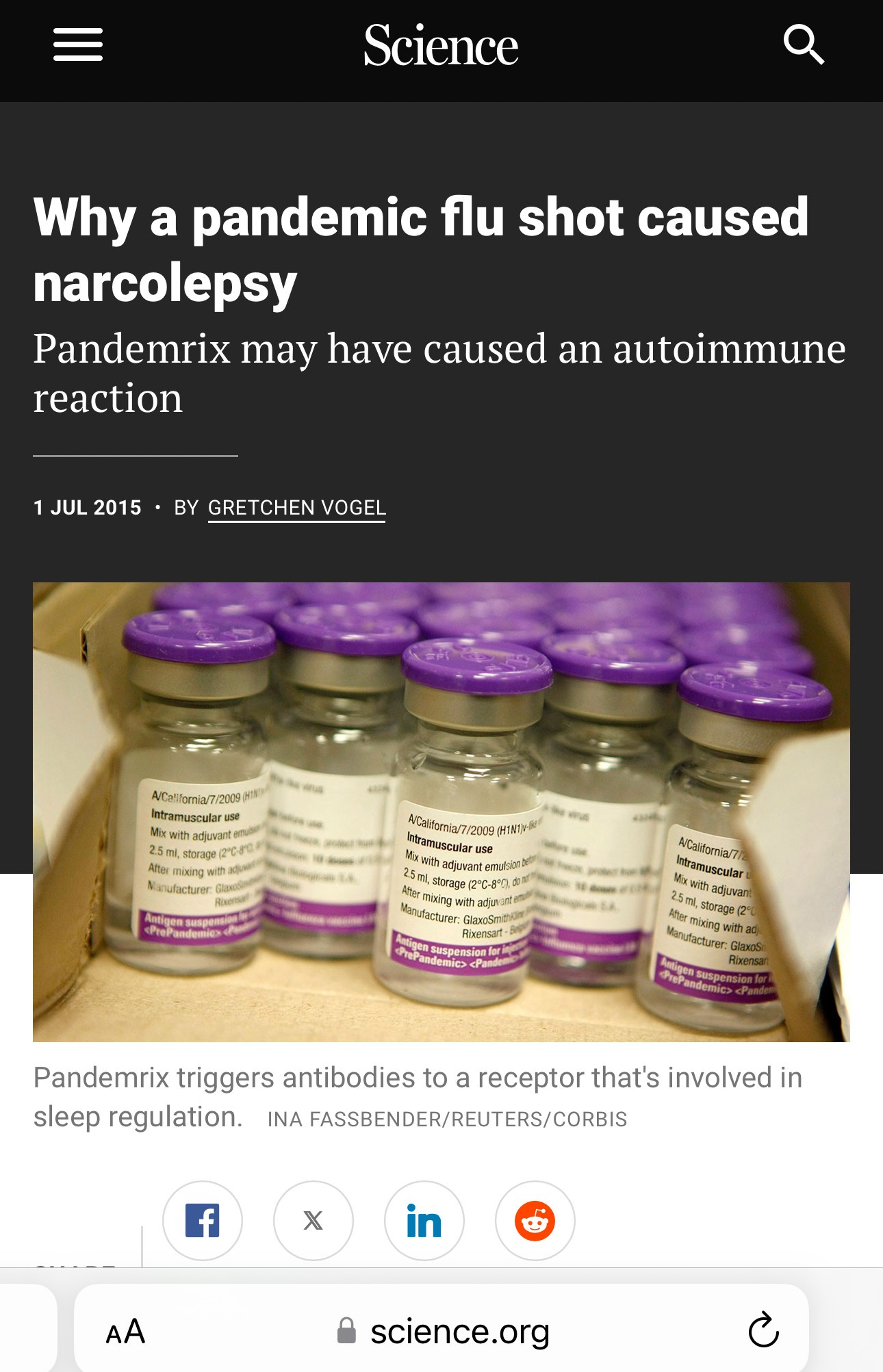
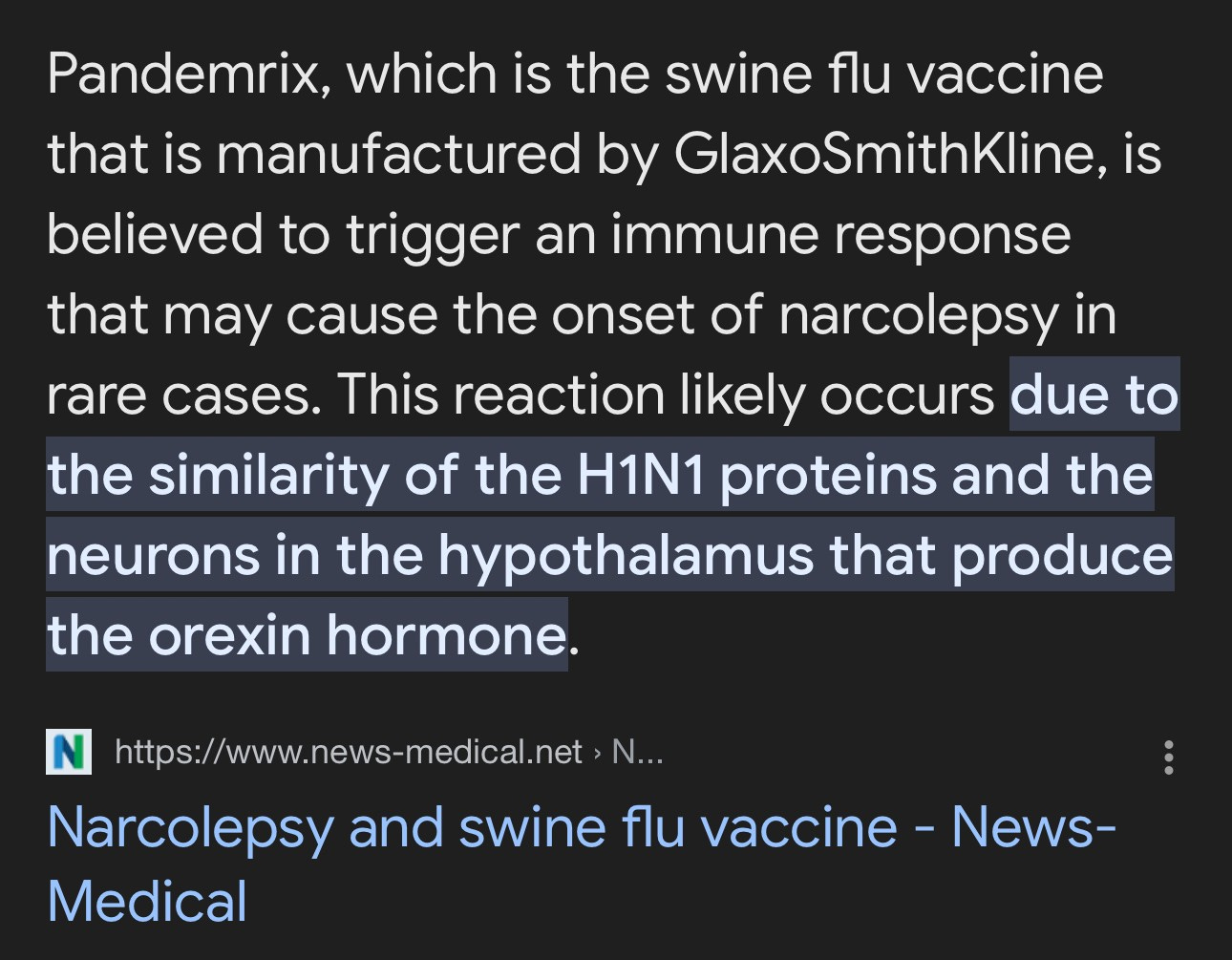
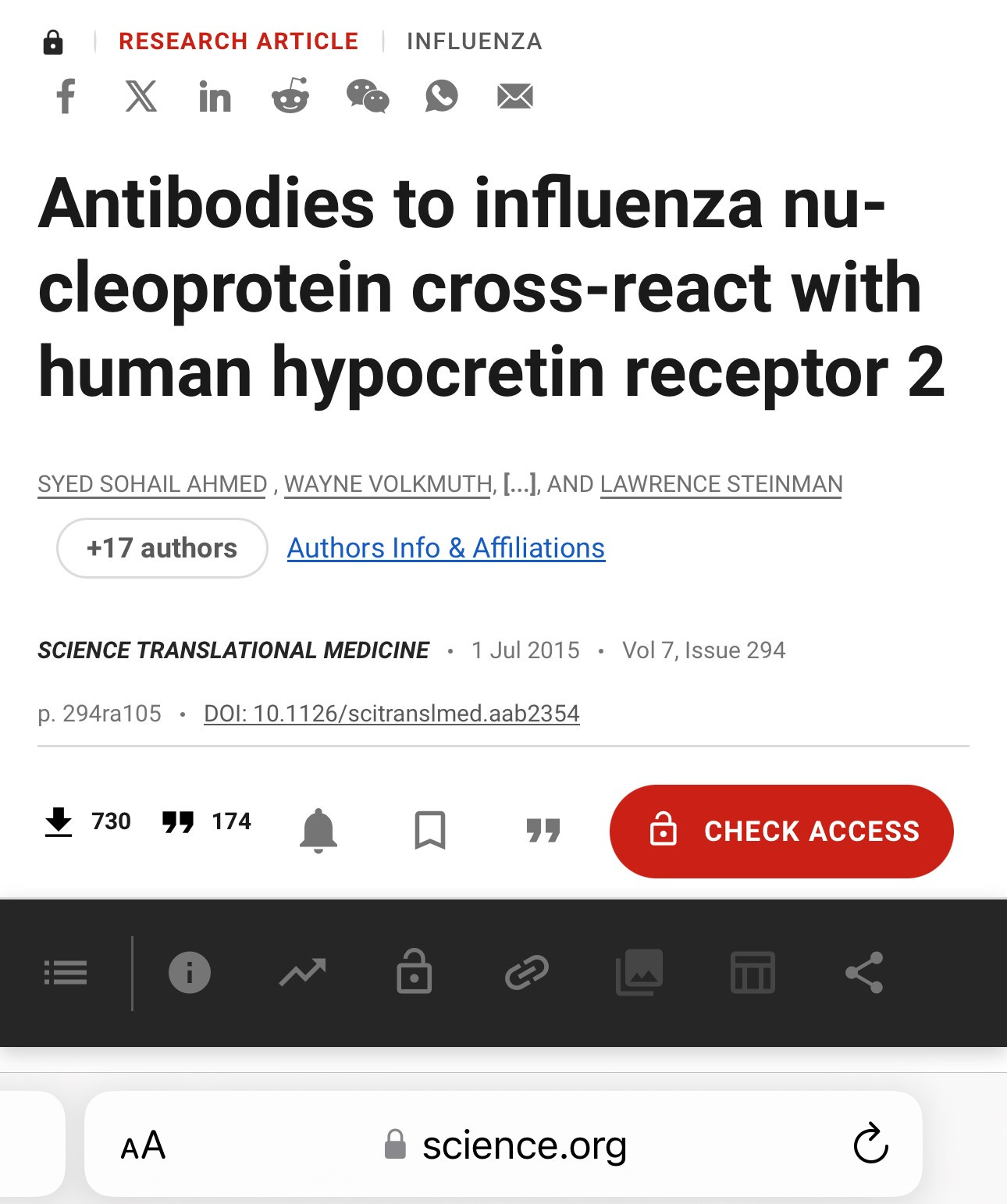


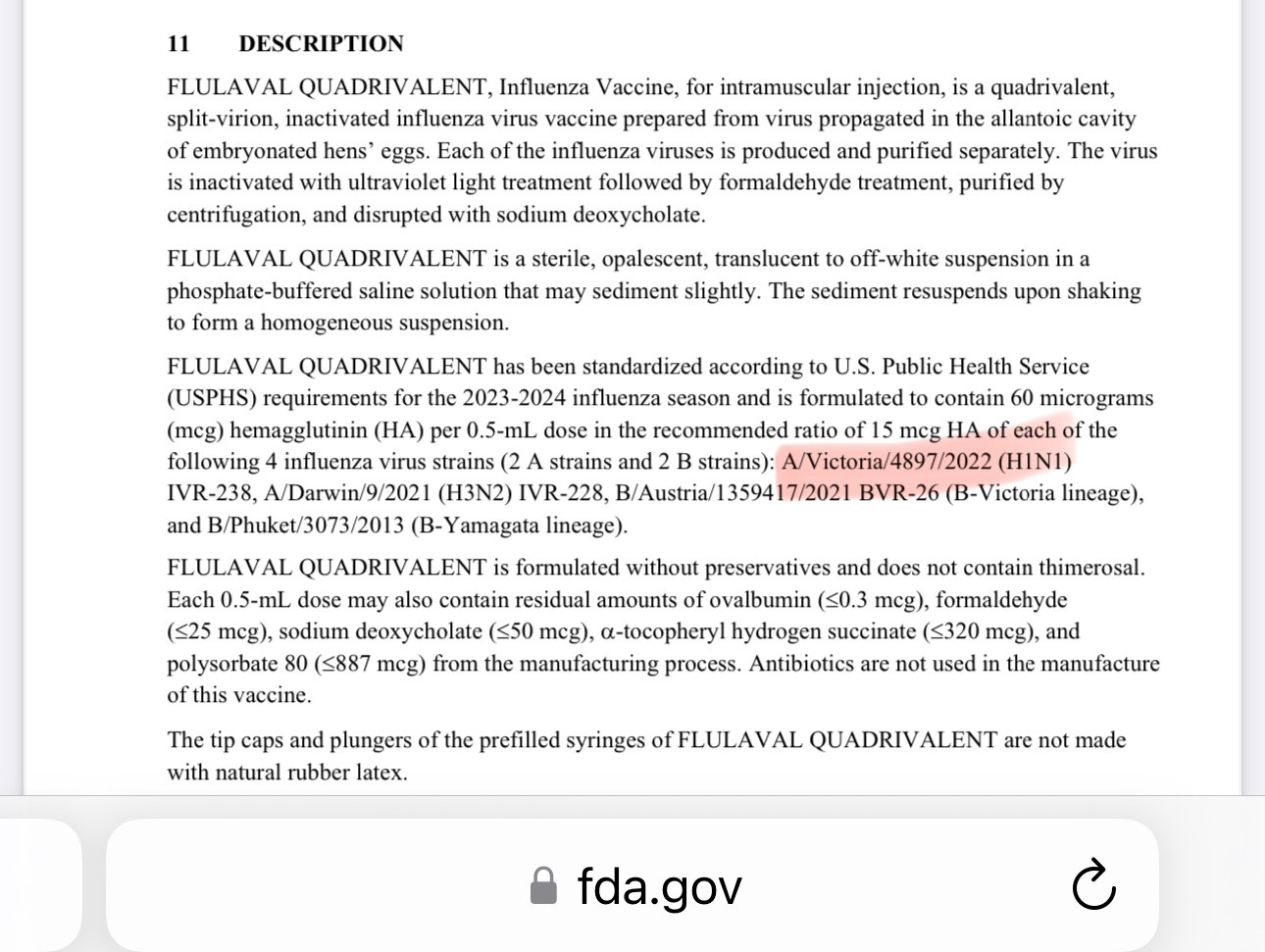
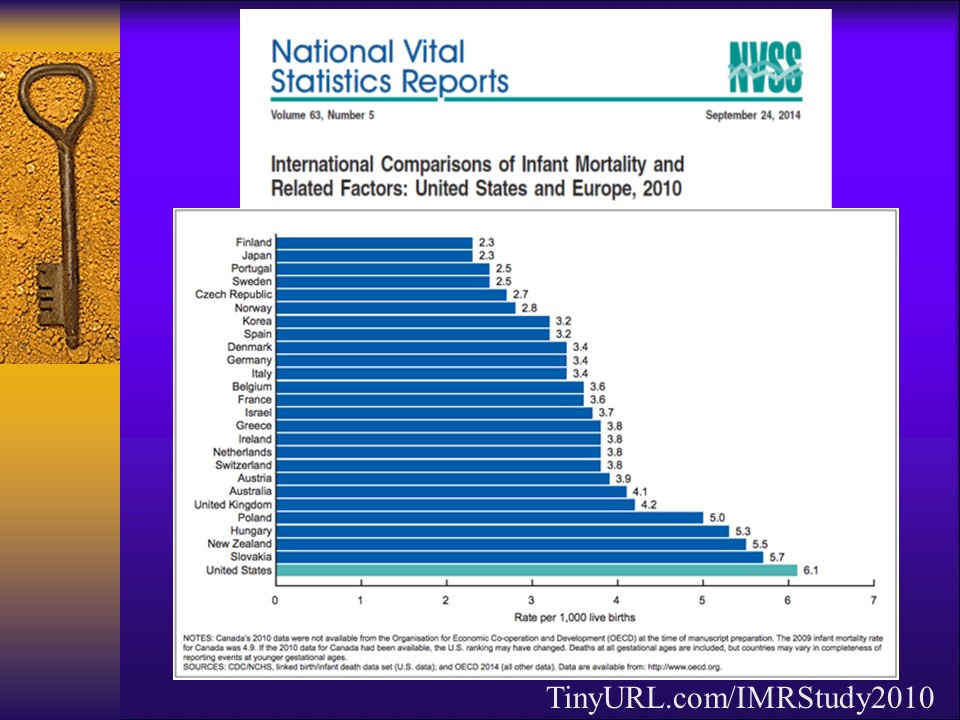
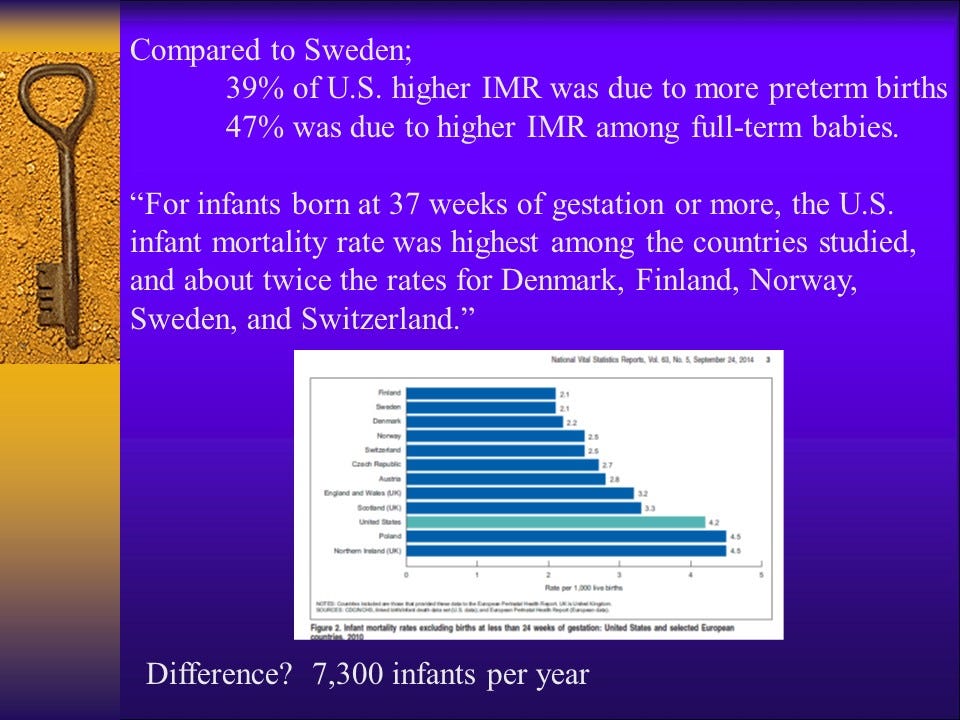
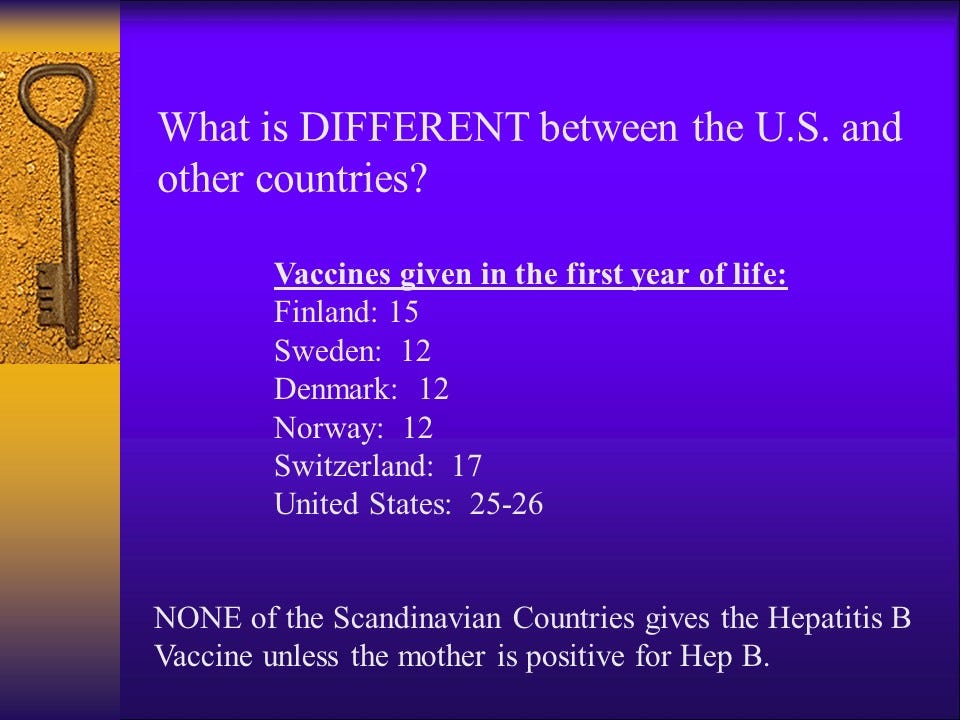
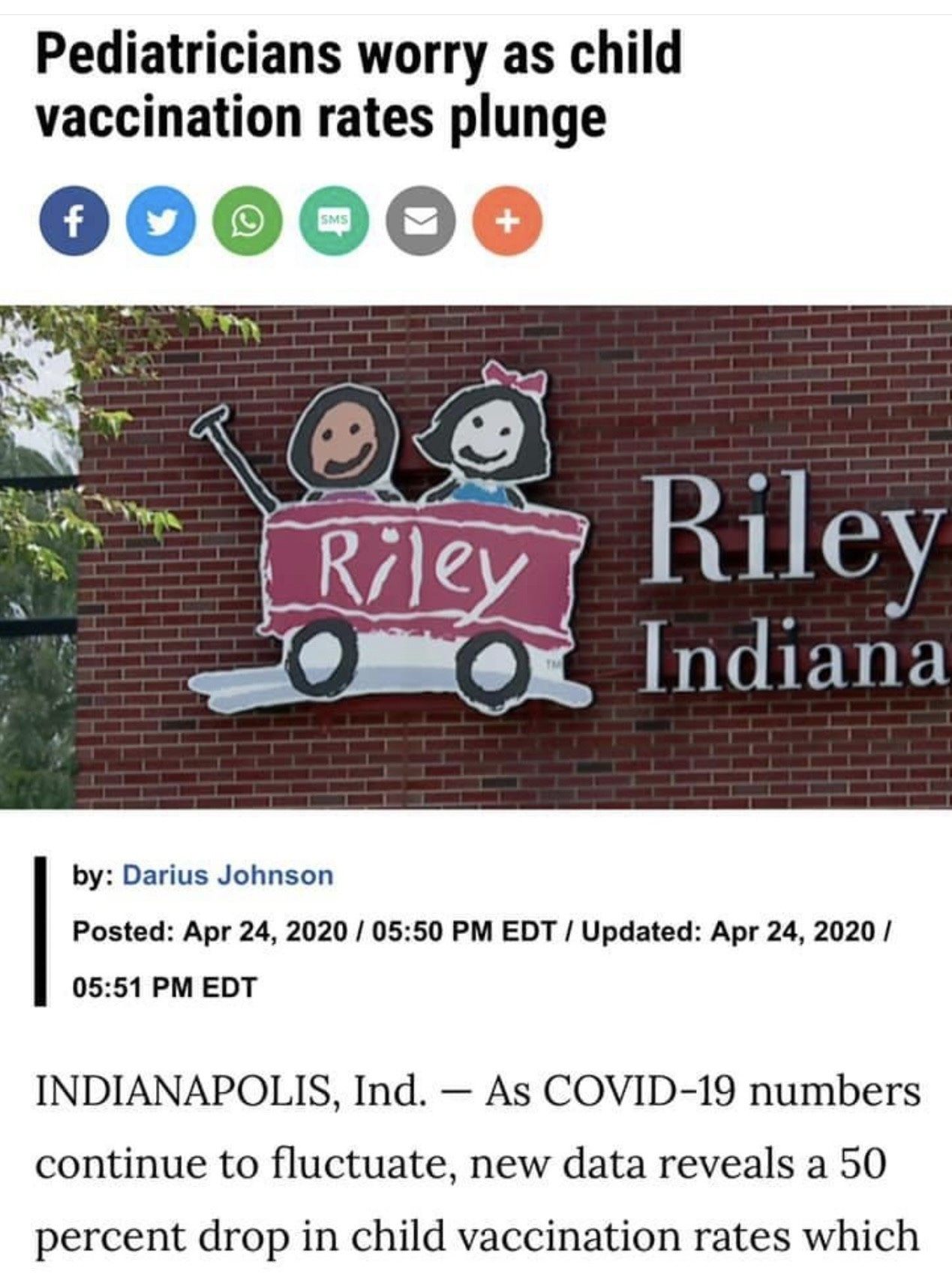
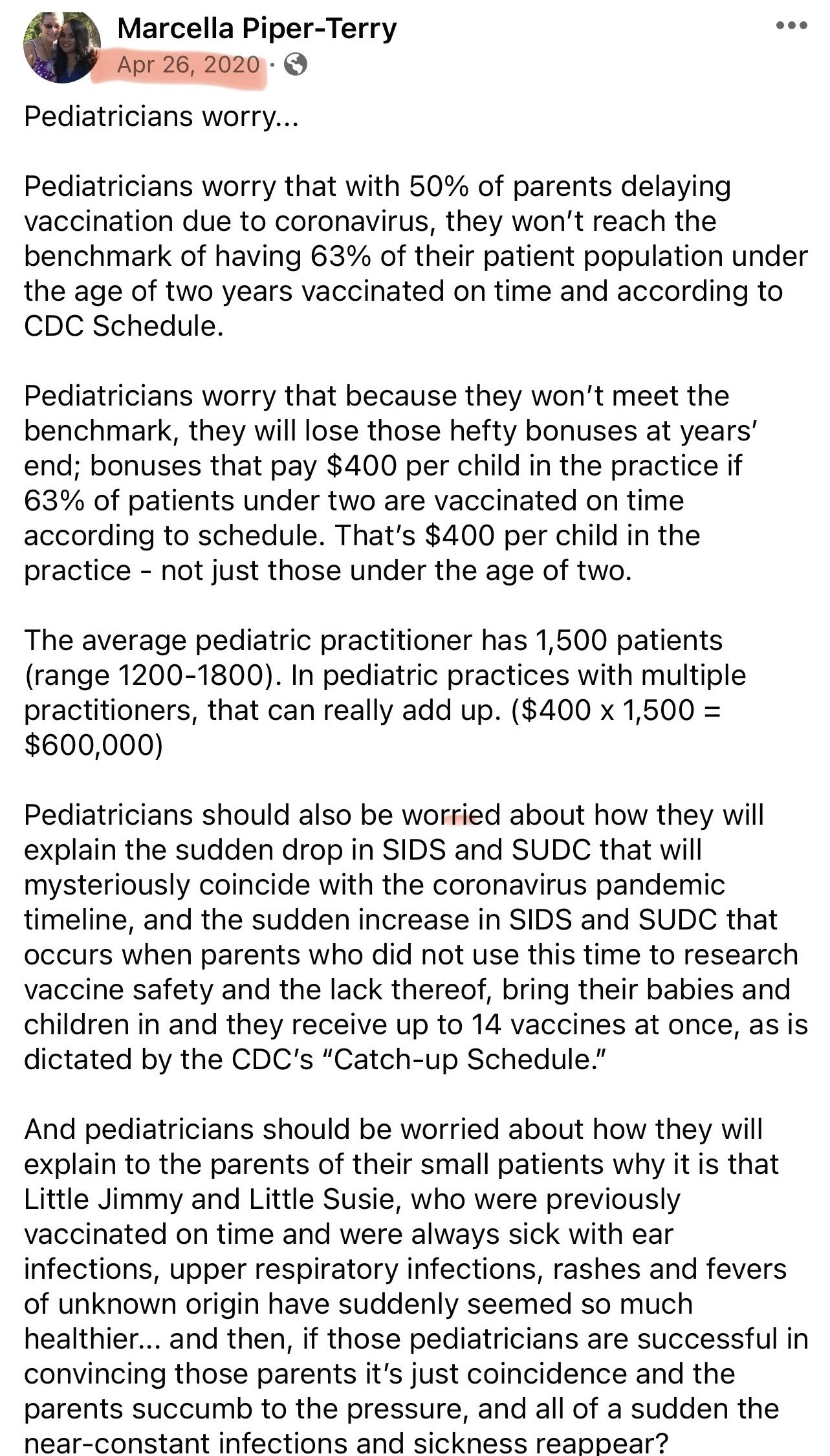




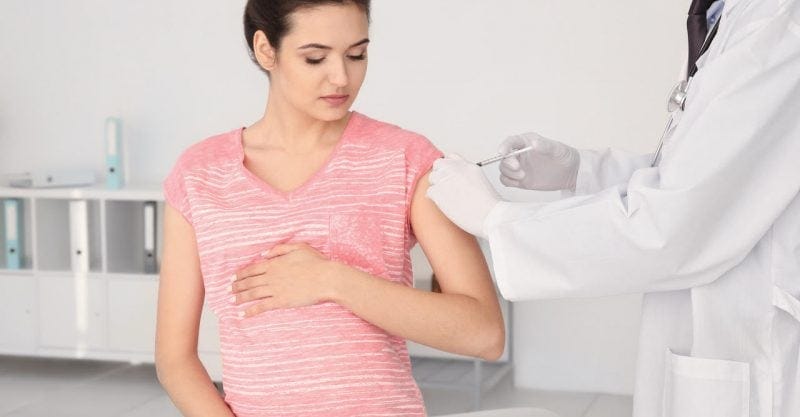
I have well over a dozen such stories right here:
https://www.stopmandatoryvaccination.com/vaccine-dangers/vaccine-death-stories-to-share-in-social-media/
Also...if you have not seen this then you need to see it.
Pure evil.
Olmsted on Autism: 1979 Wyeth Memo on DPT
https://www.ageofautism.com/2008/08/by-dan-olmsted.html
By Dan Olmsted
Now that my Age of Autism colleague J.B. Handley has demonstrated the role of Wyeth in funding Every Child By Two -- the vaccine initiative that Rosalynn Carter, Paul Offit and Amanda Peet boosted a week ago -- I think it's time to share a piece of paper someone slipped me a while back. It looks innocuous enough -- an inter-office memorandum from 1979 (Click HERE for the pdf)* about distribution of Wyeth's DPT vaccine. But read closely -- a series of SIDS deaths in Tennessee is prompting Wyeth officials to make sure that vials from a single lot don't get distributed to a single state, county or health department.